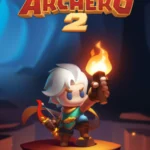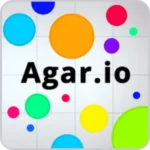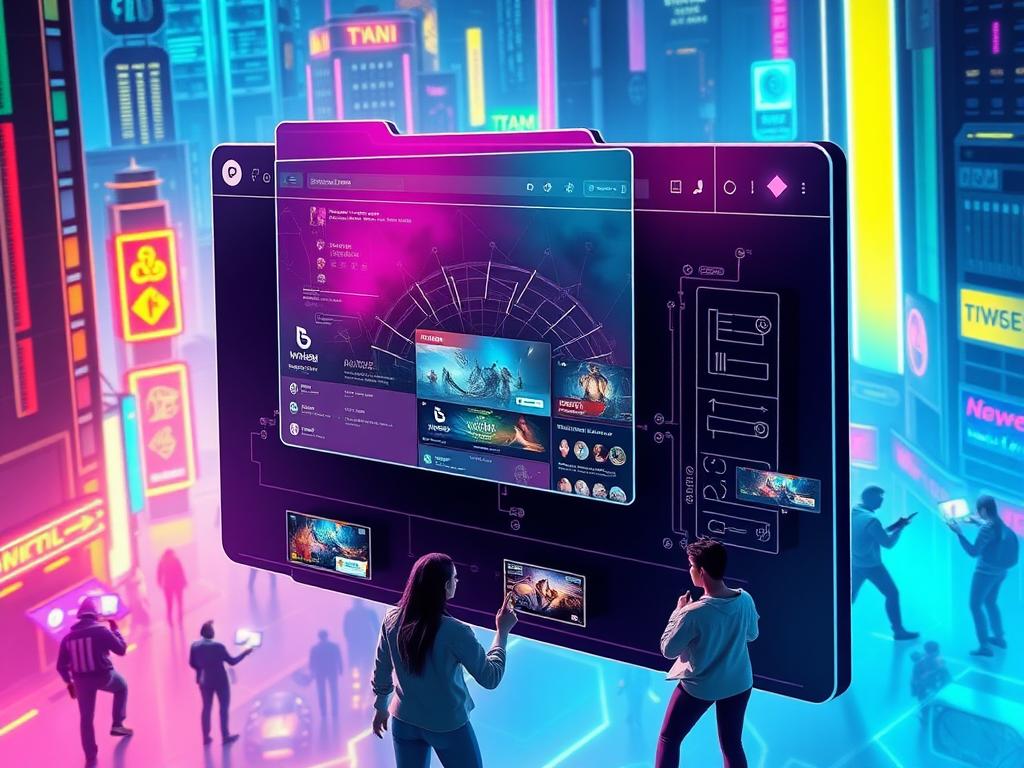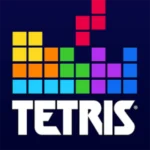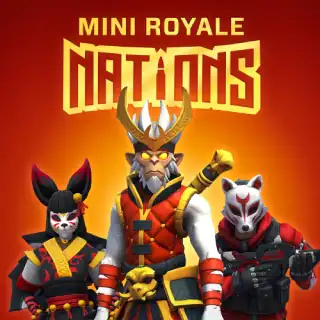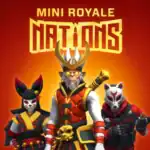The Future of Browser Gaming: Unlocking Billions of Organic Traffic in 2026
The digital landscape is constantly evolving, and at its heart lies a revolution in how we consume interactive entertainment. Browser gaming, once relegated to simple flash animations, is now poised for an unprecedented surge, promising to redefine the very fabric of how we play. As we peer into 2026, the future of browser gaming isn’t just about accessibility; it’s about harnessing cutting-edge technologies to deliver immersive, high-fidelity experiences directly through your web browser, no downloads required. This comprehensive guide will explore the most impactful browser gaming trends 2026, revealing the secrets to navigating this dynamic domain and tapping into an ocean of free organic traffic, making you the undisputed overlord of online gaming future.
For decades, the browser game was seen as a casual diversion, a time-killer between serious tasks. However, this perception is rapidly disintegrating under the relentless march of technological advancement. What was once niche is now on the cusp of mainstream dominance, thanks to advancements in web technologies, cloud infrastructure, and artificial intelligence. Prepare to have your assumptions challenged as we delve deep into the mechanics that will drive the next wave of interactive entertainment, demonstrating precisely why the browser will become the primary portal for billions of gamers worldwide, cementing its place at the pinnacle of the online gaming future.
The Dawn of a New Era: Why Browser Gaming is Ascendant
The traditional gaming landscape, dominated by consoles and high-end PCs, is facing an unexpected challenger: the humble web browser. No longer a repository for simplistic diversions, the browser is rapidly evolving into a robust platform capable of hosting complex, visually stunning, and deeply engaging experiences. This shift is not merely a technological curiosity; it represents a fundamental democratization of gaming, removing significant barriers to entry and expanding the addressable market exponentially. Understanding this foundational shift is the first step in mastering the future of browser gaming.
Beyond Casual: The Maturation of Browser Experiences
The narrative around browser games is undergoing a radical transformation. Historically, when one mentioned browser games, thoughts immediately drifted to a Flash-era relic, an .io game, or a simple puzzle. While these forms still thrive, the capabilities of modern browsers have empowered developers to push far beyond these confines. The advent of WebGL, and now the eagerly anticipated WebGPU, means that complex 3D graphics, sophisticated physics engines, and expansive game worlds are not just theoretical, but rapidly becoming commonplace in browser games 2026. Developers are no longer constrained by the limitations of old web technologies but are embracing the full power of the web stack to create experiences that rival dedicated desktop applications. This maturity allows for games with richer narratives, deeper mechanics, and greater replayability, attracting a wider demographic of players previously confined to traditional platforms. The trajectory of this evolution can be traced through the history of browser gaming, showcasing a relentless push for fidelity and complexity.
Accessibility as the Ultimate Growth Engine
The single most potent advantage of browser gaming lies in its unparalleled accessibility. The absence of downloads, installations, or hefty hardware requirements strips away the friction that often deters casual players or those with limited technical resources. A game is merely a URL click away, instantly available on any device with a modern web browser – be it a low-end laptop, a tablet, or a smartphone. This frictionless entry point is a superpower for organic growth. Imagine a social media post, an email, or a direct message linking to a game that starts playing in seconds. This immediacy transforms casual interest into instant engagement, eliminating the notorious “installation drop-off” that plagues traditional gaming. For the billions of internet users globally who do not own high-end gaming rigs but possess a web-enabled device, browser gaming represents their primary, often their only, avenue into interactive entertainment. This broad appeal is why the future of browser gaming is tied intrinsically to universal access, making it a goldmine for free organic traffic. Learn more about how to play free browser games without downloading.
Cloud Gaming Browser: The Revolution in Streaming Play
If accessibility is the engine, cloud gaming is the turbocharger. The marriage of cloud streaming technology with the web browser is arguably the most disruptive force shaping the future of browser gaming. It’s the ultimate expression of “play anywhere, on anything,” fundamentally altering the hardware paradigm that has defined gaming for decades.
Untethering Gaming from Hardware Limitations
The most compelling promise of cloud gaming browser platforms is the complete decoupling of game performance from local hardware specifications. Historically, to play the latest AAA titles, one needed a powerful, expensive gaming PC or a dedicated console. Cloud gaming flips this model on its head: the game is rendered and processed on remote, high-performance servers, and only the video feed is streamed to the user’s browser, while their inputs are sent back. This means that even a Chromebook, a smart TV, or an older smartphone can run graphically intensive, next-generation games with astounding fidelity and frame rates, provided they have a stable internet connection. Services like NVIDIA’s GeForce NOW (https://www.nvidia.com/en-us/geforce-now/) and Xbox Cloud Gaming are already demonstrating this capability, and by 2026, their browser integrations will be seamless, robust, and widespread. This paradigm shift means the potential audience for high-fidelity games expands to literally billions of devices that were previously excluded, driving unprecedented organic traffic. The implications for marketing are enormous: instead of targeting users with powerful hardware, you target anyone with an internet connection, effectively turning the entire internet into your potential player base for next-gen browser games.
Infrastructure Evolution and Latency Reduction
The primary historical obstacle to cloud gaming has been latency – the delay between a player’s input and the corresponding action on screen. However, relentless advancements in network infrastructure are rapidly mitigating this issue. The widespread rollout of 5G networks, offering ultra-low latency and high bandwidth, is a game-changer for mobile and wireless cloud gaming. Furthermore, the proliferation of edge computing, where data centers are brought physically closer to the end-user, drastically reduces the geographical distance data needs to travel. This localized processing means that the ping times for cloud-streamed browser games 2026 will become indistinguishable from local play for the vast majority of users. Coupled with sophisticated video compression algorithms and predictive input technologies, the experience will be buttery smooth, even for fast-paced, competitive titles. This infrastructure evolution transforms what was once a technical niche into a mainstream reality, accelerating the growth of high-performance browser games and attracting a massive, diverse player base hungry for seamless experiences. The consistent improvements in network stability and speed are a cornerstone of the burgeoning online gaming future within the browser environment.
AI in Browser Games: Intelligence Infused Worlds
Artificial Intelligence is not just a buzzword; it’s a fundamental technological accelerant that will redefine interaction, content, and personalization within browser games 2026. From dynamic game masters to hyper-realistic NPCs, AI will imbue browser-based experiences with unprecedented depth and responsiveness, making them feel alive and infinitely replayable.
Dynamic Content Generation and Adaptive AI
Imagine a browser game that never runs out of new content, where every playthrough feels fresh and unique. This is the promise of `AI in browser games`. Generative AI, fueled by advanced machine learning models, will be capable of procedurally generating vast game worlds, crafting intricate quest lines on the fly, designing challenging puzzles, and even composing original soundtracks tailored to player actions. This reduces the burden on developers, allowing for an explosion of content variety without commensurate development costs, leading to a much richer ecosystem of browser game innovations. Beyond generation, adaptive AI will observe player behavior, learning their preferences, skill levels, and even emotional states. Non-Player Characters (NPCs) will exhibit more nuanced behaviors, reacting intelligently to player actions, remembering past interactions, and forming dynamic relationships. Enemy AI will adapt its tactics in real-time, providing a perfectly calibrated challenge that prevents frustration while maintaining engagement. This level of dynamic content and responsiveness will create truly immersive worlds that continuously evolve based on player engagement, drawing users back repeatedly and generating sustained organic interest. Pioneering AI research (e.g., from https://openai.com/) is already laying the groundwork for these capabilities.
Personalization and Player Engagement
The ability of `AI in browser games` to analyze vast quantities of player data will unlock unprecedented levels of personalization. From the moment a player launches a game, AI can begin tailoring the experience to their specific tastes. This could manifest as personalized item recommendations, dynamically adjusted storylines that resonate with a player’s choices, or even adaptive tutorials that cater to individual learning curves, making browser games for beginners incredibly intuitive. AI can identify patterns in player drop-off, suggesting new content or challenges designed to re-engage them. Furthermore, AI-powered matchmaking will ensure players are consistently paired with opponents or teammates of similar skill, leading to more satisfying competitive and cooperative experiences. This deep level of personalization, driven by intelligent algorithms, fosters stronger player loyalty and dramatically increases engagement metrics, turning casual visitors into dedicated community members. The enhanced `readability` of game interfaces and intelligent onboarding processes, often powered by AI, further smooth the path for new users, ensuring a positive first impression and driving sustained engagement, a critical factor for the future of browser gaming‘s explosive growth.
Web3 Games and Blockchain: Ownership and Economy in the Browser
The rise of Web3 technologies, particularly blockchain and NFTs, is set to introduce a disruptive new economic model to browser gaming. This shift empowers players with true ownership of their digital assets, fostering vibrant, player-driven economies that could revolutionize monetization and engagement for the future of browser gaming.
NFTs and In-Game Assets
Non-Fungible Tokens (NFTs) fundamentally alter the concept of digital ownership in games. In traditional models, players “own” items within a game only as long as the game developer’s servers exist and they choose to grant access. With NFTs, in-game assets—be they unique characters, rare skins, powerful weapons, or virtual land—are recorded on a decentralized blockchain. This means players have verifiable, immutable ownership of these digital items, independent of the game developer. These assets can then be freely traded, sold, or even used across different compatible browser-based MMORPGs or platforms, creating a vibrant secondary market. The transparency and security offered by blockchain technology ensure the scarcity and authenticity of these digital goods, driving their real-world value. For web3 games in the browser, this means players are no longer just consumers but investors in their digital lives, deepening their commitment and attracting a new demographic interested in the intersection of gaming and digital finance. This shift will fuel a new wave of browser game innovations centered around player economies.
Play-to-Earn and Decentralized Autonomous Organizations (DAOs)
Building on NFT ownership, the “Play-to-Earn” (P2E) model allows players to earn tangible value, often in cryptocurrency or NFTs, through their in-game activities. This could involve breeding digital creatures, winning tournaments, completing quests, or even simply playing consistently. This transforms leisure into a potential income stream, attracting a massive new audience, especially in developing economies where traditional employment opportunities may be scarce. P2E mechanisms, often integrated directly into the browser, will become a significant driver for the future of browser games. Furthermore, Decentralized Autonomous Organizations (DAOs) empower players with direct governance over the games they play. Instead of a centralized company making all decisions, token holders (players) can vote on game updates, economic policies, or even the allocation of treasury funds. This unprecedented level of community involvement fosters a deep sense of belonging and investment, aligning the interests of players and developers. Prominent blockchain gaming platforms like Gala Games (https://gala.com/) are already showcasing the potential of these models. The combination of P2E economics and DAO governance will create self-sustaining, community-driven ecosystems within the browser, drawing unprecedented and sustained organic traffic as players become stakeholders in the game’s success, fundamentally altering browser gaming trends.
Visual Fidelity and HTML5 Gaming Innovations
The era of crude browser graphics is firmly in the rearview mirror. Thanks to continuous advancements in web rendering technologies, HTML5 gaming is now capable of delivering experiences that were once the exclusive domain of dedicated gaming hardware, challenging perceptions and broadening horizons for the online gaming future.
Pushing the Boundaries of Browser Graphics
The evolution of web graphics APIs is nothing short of revolutionary. WebGL (Web Graphics Library) has long enabled hardware-accelerated 2D and 3D graphics directly within the browser, allowing for impressive visual effects and complex scenes. However, the next frontier is WebGPU, a new web standard that provides a lower-level, more modern API for accessing GPU capabilities, akin to Vulkan or DirectX 12. WebGPU promises significantly better performance, more efficient resource utilization, and access to advanced rendering features such as compute shaders, ray tracing (even if limited), and sophisticated post-processing effects. This means that next-gen browser games will boast near-console quality graphics, with realistic lighting, intricate particle systems, complex animations, and high-resolution textures, all streamed seamlessly within your browser. Game engines like Unity and Unreal Engine are increasingly optimizing their export pipelines for web platforms, making it easier for developers to bring high-fidelity titles to the browser. This visual parity is crucial for attracting players who demand cutting-edge graphics, transforming the perceived value and capabilities of browser-based experiences and solidifying the future of browser gaming as a top-tier entertainment medium.
Optimization for Performance and Readability
While pushing graphical boundaries, the importance of optimization cannot be overstated. High fidelity must not come at the cost of performance or accessibility. Developers are employing advanced techniques like progressive asset loading, where game assets are streamed and loaded in the background as needed, rather than requiring a lengthy initial download. This ensures players can jump into the action faster, enhancing the crucial “instant play” advantage. Dynamic LOD (Level of Detail) systems adjust graphical complexity based on proximity and performance targets, ensuring smooth gameplay even on less powerful devices. Furthermore, efficient use of web workers allows computationally intensive tasks to run in separate threads, preventing the main browser thread from freezing and ensuring a responsive user interface. The focus on `readability` extends beyond just text; it encompasses intuitive UI/UX design that is consistent across devices, making complex game mechanics easy to understand and interact with. These **browser game innovations** are key to maintaining the broad appeal of browser gaming, ensuring that the enhanced visual fidelity is accessible to the widest possible audience. Strategies for optimizing your browser for gaming are becoming increasingly important for players as well, further highlighting this trend.
The Social Fabric: Multiplayer and Community Integration
Gaming has always been a social activity, and the future of browser gaming is deeply intertwined with seamless multiplayer capabilities and robust community features. As games become more complex and engaging, the ability to play with friends and connect with like-minded individuals directly within the browser will be paramount, driving massive engagement and organic virality.
Seamless Multiplayer Experiences
The days of struggling with port forwarding or external voice chat applications for multiplayer browser games are rapidly fading. Modern web technologies, including WebSockets and WebRTC, enable low-latency, real-time communication between players, supporting a wide array of multiplayer genres directly in the browser. From competitive Player-versus-Player (PvP) arena battles to cooperative dungeon crawls, the technical infrastructure is now in place to handle complex synchronized gameplay. By 2026, it will be common to see browser-based battle royales, massive multiplayer online role-playing games (MMORPGs), and real-time strategy games with hundreds or even thousands of concurrent players, all running smoothly within a standard web browser. The emphasis will be on instant connectivity and minimal setup, encouraging spontaneous gaming sessions. This ease of access for multiplayer experiences, exemplified by titles like best multiplayer browser games or 2 player web games, will be a significant driver for attracting and retaining players, as the social aspect of gaming remains a primary motivator. The ability for friends to simply share a link and jump into a game together with zero friction is an unparalleled advantage for the online gaming future.
In-Browser Social Hubs and Cross-Game Connectivity
Beyond direct multiplayer sessions, the future of browser gaming will feature deeply integrated social hubs. Imagine a persistent virtual space within the browser where players can meet, chat, form guilds, and launch into different games together, much like a lightweight metaverse. These hubs will offer integrated voice and text chat, robust friend lists, activity feeds, and even shared virtual environments where players can showcase their achievements or digital assets. The trend will move towards “connected ecosystems” where progression, friends lists, and even in-game currency might carry over or be recognized across multiple games from the same developer or platform. This fosters a stronger sense of community and provides players with a persistent identity within the browser gaming world. Discord (https://discord.com/), while external, provides a glimpse into the power of integrated community tools, and these functionalities will increasingly be baked directly into browser game platforms. This deep social integration means players spend more time within the ecosystem, not just playing, but interacting, fostering loyalty, and generating massive word-of-mouth promotion, ensuring these browser gaming trends continue to drive viral growth.
Beyond the Horizon: Emerging Trends and Opportunities
The dynamic nature of the internet ensures that the landscape of browser gaming will continue to evolve in exciting and unpredictable ways. Several emerging trends, from player-created content to competitive esports, are poised to dramatically expand the scope and impact of browser-based entertainment, securing its place in the online gaming future.
User-Generated Content (UGC) and Creator Economy
The success of platforms like Roblox and Minecraft highlights the immense power of User-Generated Content (UGC). The future of browser gaming will see a significant expansion of accessible, in-browser tools that empower players to become creators. Simple drag-and-drop editors, intuitive scripting interfaces, and robust asset libraries will allow non-developers to design their own levels, create custom game modes, build unique experiences, and even mint their own digital assets as NFTs. Platforms will emerge that provide the infrastructure for players to not only create but also monetize their creations, establishing a true “creator economy” within the browser. This could involve earning a share of ad revenue, selling custom items, or receiving direct support from other players. The viral loop created by UGC is incredibly powerful: players create content, share it with friends, who then become players and potentially creators themselves. This decentralization of content creation dramatically increases the volume and diversity of available games, leading to an explosion of long-tail organic search traffic as users search for unique, community-made experiences. Imagine the sheer volume of unique content that will spring forth, much like the vibrant community around Minecraft online game. This shift transforms players into active contributors, driving an unparalleled surge in engagement and discoverability for browser game innovations.
The Esportification of Browser Gaming
As the visual fidelity, performance, and multiplayer capabilities of browser games 2026 continue to improve, so too will their viability as competitive esports titles. Esports has transitioned from a niche hobby to a global phenomenon, attracting massive viewership and sponsorship. Browser games, with their inherent accessibility and ease of spectating (simply share a link to a live stream), are perfectly positioned to capitalize on this trend. Expect to see dedicated browser-based competitive titles, structured leagues, and professional tournaments emerging. The low barrier to entry for players means a vast pool of potential talent, while the spectator-friendly nature of browser-based streaming will draw large audiences on platforms like Twitch and YouTube. Developers will design games specifically with competitive balance and spectator appeal in mind, fostering a vibrant professional scene. The excitement generated by esports translates directly into massive organic traffic, as fans seek out streams, VODs, news, and guides related to their favorite browser-based competitive titles. Major esports organizations like ESL Gaming (https://esl.com/) will increasingly turn their attention to browser platforms, cementing their legitimacy and drawing a colossal audience to the future of browser gaming.
Gamification Beyond Entertainment
The principles of game design—engagement, reward, progress, and challenge—are increasingly being applied outside of traditional entertainment. By 2026, browser gaming trends will see a significant integration of gamification into various sectors, driving new forms of organic traffic and utility. Educational browser games will make learning more interactive and enjoyable, from language acquisition to complex scientific simulations. Corporate training will leverage browser-based simulations to enhance skill development and team building. Health and wellness applications will use game mechanics to encourage positive habits, exercise, and mindfulness. Even civic engagement and scientific research could incorporate browser-based games to crowdsource data or solve complex problems. These applications leverage the inherent addictiveness and motivational power of games for productive outcomes. Think of browser games for learning and education becoming the norm. The appeal here is not just entertainment but practical utility, attracting users searching for solutions to real-world problems. This expansion into non-traditional markets creates entirely new avenues for organic discovery and massive scale, further solidifying the browser as a versatile and indispensable platform in the online gaming future.
Monetization Strategies for the Future of Browser Games
The success of any thriving game ecosystem hinges on sustainable monetization. For the future of browser gaming, innovative and player-friendly models are emerging that move beyond traditional pay-to-play, focusing on value, choice, and sustained engagement to attract and retain billions of users, ensuring a robust online gaming future.
Evolving Business Models
The dominant business model for browser games in 2026 will be a sophisticated evolution of free-to-play (F2P), often combined with elements of subscriptions and Battle Passes. F2P remains the king for user acquisition due to its zero barrier to entry, but the monetization will become far more nuanced. Instead of aggressive pay-walls, games will focus on offering cosmetic enhancements, convenience items, and seasonal content (Battle Passes) that provide long-term engagement and value. Ethical advertising will be seamlessly integrated, often through rewarded video ads or optional ad-supported experiences rather than intrusive banners. The key is to provide genuine value for every dollar spent, making purchases feel like a natural enhancement to the experience rather than a necessity to progress. Subscription models, offering premium features, ad-free play, or exclusive content, will also gain traction, appealing to dedicated players. The blend of these models, alongside the emerging play-to-earn mechanics discussed previously, will create diverse revenue streams that cater to various player types, from the casual, free player to the dedicated, spending enthusiast. Games like best idle browser games often use a blend of these models, demonstrating their effectiveness.
In-Game Purchases and Microtransactions (Responsible Design)
While often controversial, microtransactions, when implemented responsibly, are a powerful engine for game development and growth. The future of browser gaming will see a move towards transparency and fairness in in-game purchases. Loot boxes, for example, will likely become more regulated or evolve into “mystery boxes” with clear odds. The focus will shift to direct purchases of desirable items or services, giving players full control over what they acquire. This includes unique skins, emotes, character customizations, and quality-of-life improvements. Beyond cosmetics, developers will explore innovative ways to offer value through microtransactions that do not create a “pay-to-win” scenario, which often alienates free players and damages game longevity. Examples include time savers, progression boosts (not direct power), or exclusive access to community events. The design of these systems will leverage insights from `AI in browser games` to understand player purchasing habits and offer personalized, relevant offers. The integration of blockchain-based assets (NFTs) further enhances the appeal of in-game purchases by providing players with true ownership and the potential for resale, adding another layer of value and driving unprecedented levels of engagement and spend within the browser gaming trends. These ethical and innovative approaches to monetization are crucial for the long-term health and massive organic growth of the browser game ecosystem, fueling continuous browser game innovations.
Navigating the Landscape: SEO for Billions of Traffic
Understanding the technological shifts is only half the battle. To truly dominate the future of browser gaming and command billions of free organic traffic daily, you must master the dark arts of SEO. This isn’t just about keywords; it’s about architectural precision, content authority, and anticipating the very desires of the search engine gods themselves. This is how you whisper secrets to Google’s algorithm.
Content is King, Context is Queen
In the evolving search landscape, sheer keyword stuffing is a relic of a bygone era. Today, and especially by 2026, content quality and topical authority reign supreme. To capture billions of organic users, you must create content that deeply satisfies user intent for terms like “future of browser games” or “browser gaming trends 2026.” This means producing comprehensive, expert-level articles, guides, and resources that leave no stone unturned. Think long-form, pillar content that not only answers direct questions but anticipates related queries and provides a holistic understanding of the subject. Your content should demonstrate deep expertise, becoming the definitive resource for any given topic. For example, if you’re discussing “cloud gaming browser,” you don’t just define it; you explain its technical underpinnings, compare services, discuss latency solutions, and predict its future impact. This establishes your domain as an undisputed authority, leading to higher rankings and sustained organic visibility. Every piece of content should add genuine value, making the user’s journey fulfilling and informative. This is the bedrock of enduring SEO success, ensuring that your insights on browser game innovations are not merely read, but absorbed and acted upon by an eager audience.
Technical SEO and User Experience
Even the most brilliant content will languish in obscurity without a flawless technical foundation. For the future of browser gaming, site speed, mobile-friendliness, and Core Web Vitals are non-negotiable. Google increasingly prioritizes sites that offer an exceptional user experience (UX), and these metrics are direct indicators. Your site must load instantly, be perfectly responsive across all devices (desktop, tablet, mobile), and exhibit smooth interactivity with minimal layout shifts. This includes optimizing browser performance settings for your audience. For a gaming-focused site, image optimization, efficient code, and server responsiveness are paramount. Ensure `readability` is not just about font size, but also about logical content structure, clear headings, and digestible paragraphs. A clean, intuitive navigation schema helps both users and search engine crawlers understand your site’s hierarchy and find relevant content easily. Structured data (Schema markup) should be meticulously implemented to provide search engines with explicit information about your content, enhancing visibility in rich snippets and other SERP features. This technical mastery ensures that when users search for “next-gen browser games,” your platform is not only found but also celebrated by the algorithms for its superior user experience, converting impressions into billions of clicks.
Leveraging Niche Keywords and Semantic Search
While broad terms like “online gaming future” are valuable, the real goldmine for billions of organic traffic lies in mastering niche and long-tail keywords, especially in the context of semantic search. Search engines are no longer just matching keywords; they are understanding intent and context. This means identifying the precise questions users are asking and the problems they are trying to solve. For example, instead of just “browser gaming trends,” target “how will AI impact browser game development in 2026?” or “best cloud gaming browser for low-end PCs.” These longer, more specific queries often have less competition and higher conversion rates. Leverage tools to analyze semantic relationships between keywords, build comprehensive topic clusters, and ensure your content covers the entire breadth and depth of a subject. Use internal linking strategically, connecting related articles to build topical authority within your domain. Your article on “future of browser games” might link to a detailed guide on best strategy browser games or an analysis of free online games with no download required. This intricate web of interconnected, highly relevant content signals to search engines that you are the ultimate authority on browser gaming, driving an unending stream of highly qualified organic traffic directly to your digital doorstep.
Conclusion: The Browser as the Epicenter of Gaming’s Future
As we stand on the precipice of 2026, the trajectory of browser gaming is clear: it is no longer a peripheral niche but a central pillar of the interactive entertainment industry. We have traversed the landscape of transformative trends, from the liberation offered by cloud gaming browser technology to the immersive intelligence infused by AI in browser games. The disruptive potential of Web3 games, with their promise of true digital ownership and player-driven economies, stands poised to reshape financial models. Simultaneously, continuous HTML5 gaming innovations are shattering graphical limitations, enabling `next-gen browser games` that defy expectations, while enhanced multiplayer and community integration foster vibrant, engaged player bases.
The convergence of these powerful forces—unprecedented accessibility, technological sophistication, and evolving economic models—creates an unparalleled opportunity. For those who understand these dynamics and skillfully apply the principles of God-tier SEO, the `future of browser gaming` isn’t merely a possibility; it is a guaranteed gold rush. Billions of free organic traffic await those visionary enough to build, optimize, and dominate this burgeoning digital frontier. The browser is transforming into the universal portal for play, the gateway to an `online gaming future` where seamless access and boundless innovation reign supreme. Embrace these `browser gaming trends`, for they are the keys to unlocking an empire of engagement in `browser games 2026` and beyond. The digital universe is yours for the taking; the browser is your ultimate weapon.


